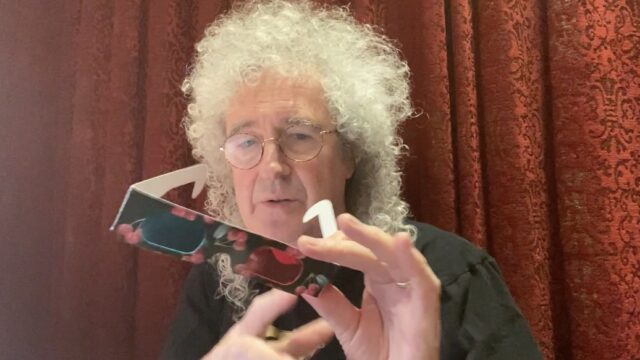
2021-03-10
The Stereoscopic Corner #1
A Mastcam-Z blog series by Brian May and Claudia Manzoni
[Editor’s Note: I’m delighted that stereoscopic imaging experts and Mastcam-Z team Technical Collaborators Brian May and Claudia Manzoni have agreed to share some of their wonderful 3-D image products made from Mastcam-Z images. In this first post in the series, Brian describes by text and video his experience, background, and motivation for working with and sharing 3-D photography, and he and Claudia showcase some of their spectacular early work with some of the early mission images from Jezero crater. — Jim Bell]
In the beginning at least, in this series of posts from the “Stereoscopic Corner” of the Mastcam-Z blog site, we will post each stereoscopic view in three different formats:
1) PARALLEL side-by-side. This is the classic stereo card format dating from around 1850 and still favoured by perhaps the majority of stereoscopy enthusiasts around the world. It’s viewable to give a very immersive experience using your Smartphone in combination with one of our London Stereoscopic Company OWLs – or by parallel FREE-VIEWING. The OWL is just a 21st century version of the Brewster Stereoscope, sold in millions in Victorian Britain and France, and eventually world-wide – including the huge American Keystone company around 1900, who supplied them again in millions for educational institutions and entertainment. Free-Viewing is all about relaxing the convergence of the eyes to a parallel position – as if we are looking through the screen at an object at infinity, and allowing the two side-by-side images to float together. The focus of the eyes is then gently brought to bear on the screen, and, with a little patience, a single 3-D image will appear! We can help you acquire the knack of free-viewing – for instance please visit www.LondonStereo.com – and it’s fun. But it’s worth emphasising that the best approximation to ‘being there’ is always through a stereoscope. You CAN view these images on a laptop screen with an OWL, but the resolution and effect is vastly better on a phone. Warning … optically, a classic Keystone stereoscope is perfect for this – but it has the almost insuperable problem that the ‘stick’ on which the car mount slides will stop you getting close enough to the computer screen (or to stereos in a book). That’s why I invented our OWL!!
2) CROSS-EYED side-by-side. This format cannot be viewed in any stereoscope, but can be FREE-VIEWED in a different way, which many people (perhaps half the population) find easier than parallel free-viewing. In this case the technique is to bring the convergence of the axes of the eyes inwards, rather than outwards. This can be encouraged by putting a finger up in front of the eyes, and staring on it, while remaining aware of the stereo pair behind on the screen. Once again, with a little practice, the two images will fuse into one, and the stereo effect will be seen. As with parallel free-viewing, it’s fun, but the geometry is not suitable for experiencing the ‘virtual reality’ which a stereoscope will give you. Of course modern VR is the direct descendant of Stereoscopy, but with the modification that as the head is turned, the scene stays still!
3) ANAGLYPH. In the 1950s a new way of making stereoscopy work was devised – using red and green filters. It was then called for the first time “3-D” and the technique was used in comics and in early films. In this version of the stereoscopic images, the left and right images are printed on top of each other and red and green glasses deliver the two separate images needed for the depth effect to each eye. There are a few different ways of making Anaglyphs, and we use one which preserves at least some of the colour information. There are advantages to delivering 3-D in Red and Green – ease of printing, easy zoom capability, and cheapness of equipment. But in fact most of the colour is lost, the brightness of the image is compromised, and it tends to be tiring, since the brain is all the time trying to deal with very different signals from each eye. Again, the geometry does not provide an immersive experience – only the stereoscope does that! Which is really the core reason that we are ‘evangelising’ on this page! Enjoy!
Here are some early example 3-D image products that we created from publicly-released Mastcam-Z images in Jezero crater, Mars:
Harbor Seal Rock: This curiously shaped dark rock sitting proud of the floor of Jezero crater was imaged by Mastcam-Z in glorious 3-D on Perseverance’s Sol 3. Informally named ‘Harbor Seal Rock’ by the team, it is about half a meter across and was probably carved into this intriguing shape by grains of sand carried by Martian winds over billions of years. Rocks eroded by the wind are called ‘ventifacts’, a Latin word meaning ‘wind-made’.
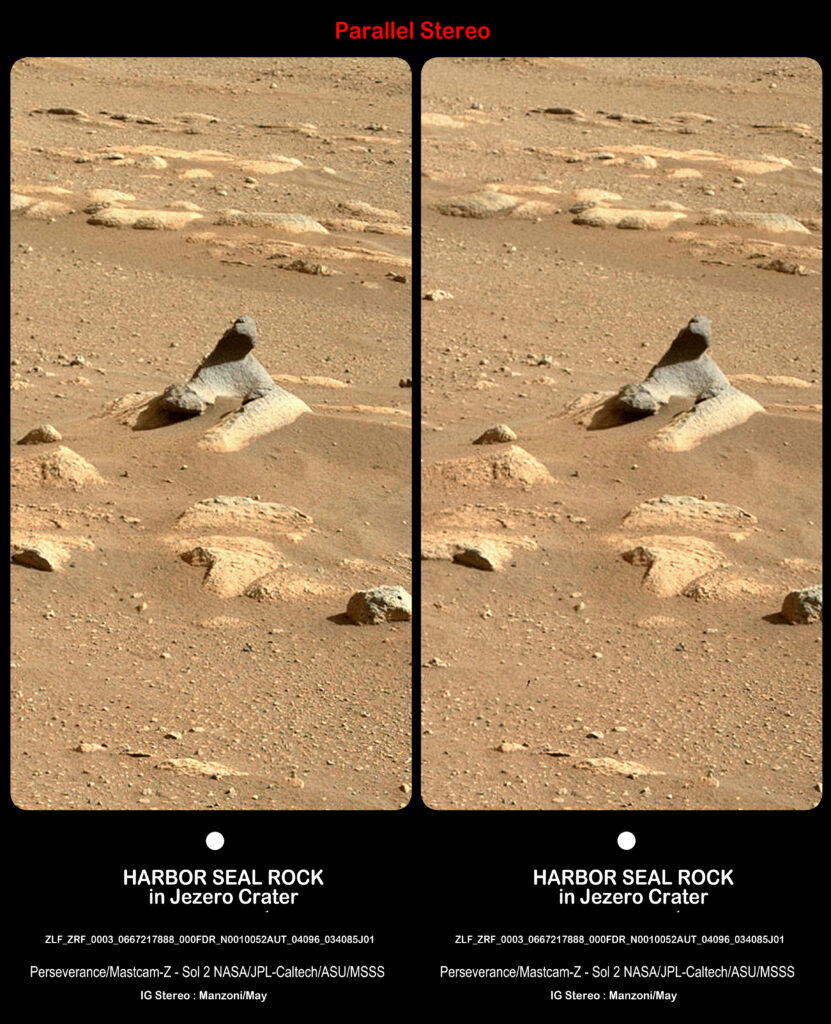
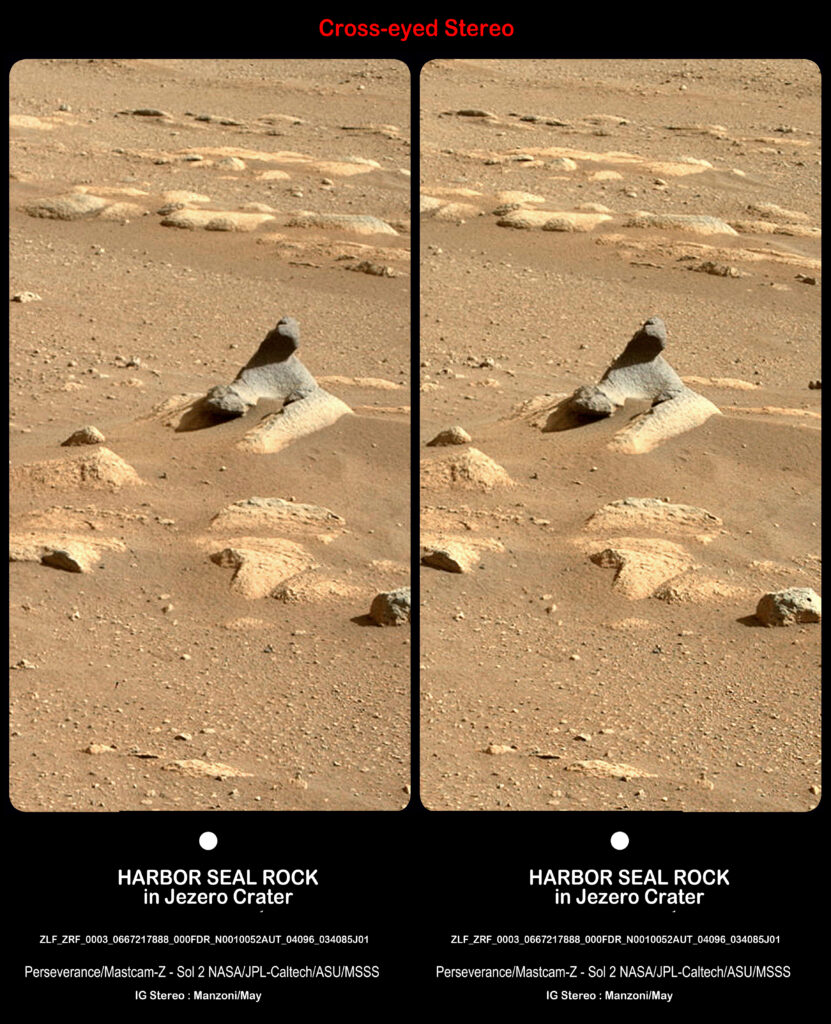
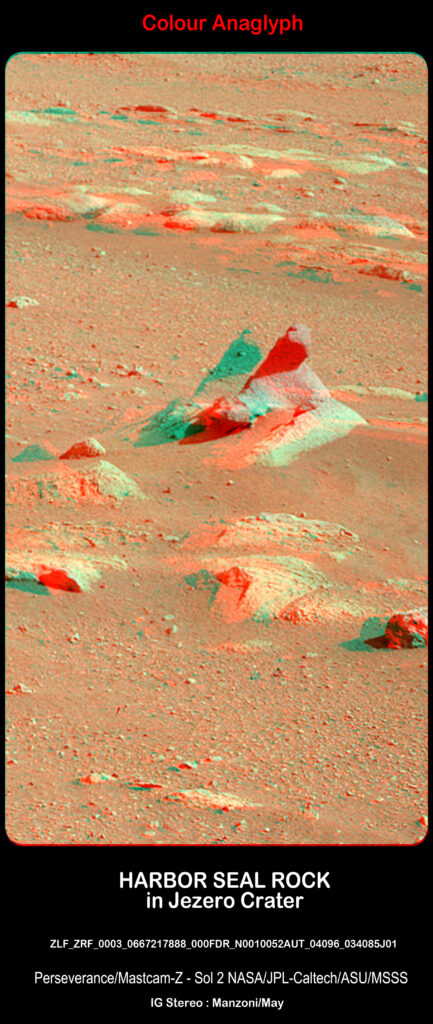
Delta Remnant, View 1: This distinctive stratified hill, visible at a distance of about 2.3 kilometers from the Rover’s landing site, is thought to be a remnant of an originally more extensive river delta aggregation that was partially eroded, leaving more resistive mounds like this behind. The feature is about 200 meters across and will hopefully be inspected more closely by the Rover in the near future. The elements for this stereo were four frames kindly identified for us by ASU Mastcam-Z Payload Downlink Lead Corrine Rojas. The images were taken on sol 4 during one of the early mission focus and zoom set-up tests of the Mastcam-Z system.
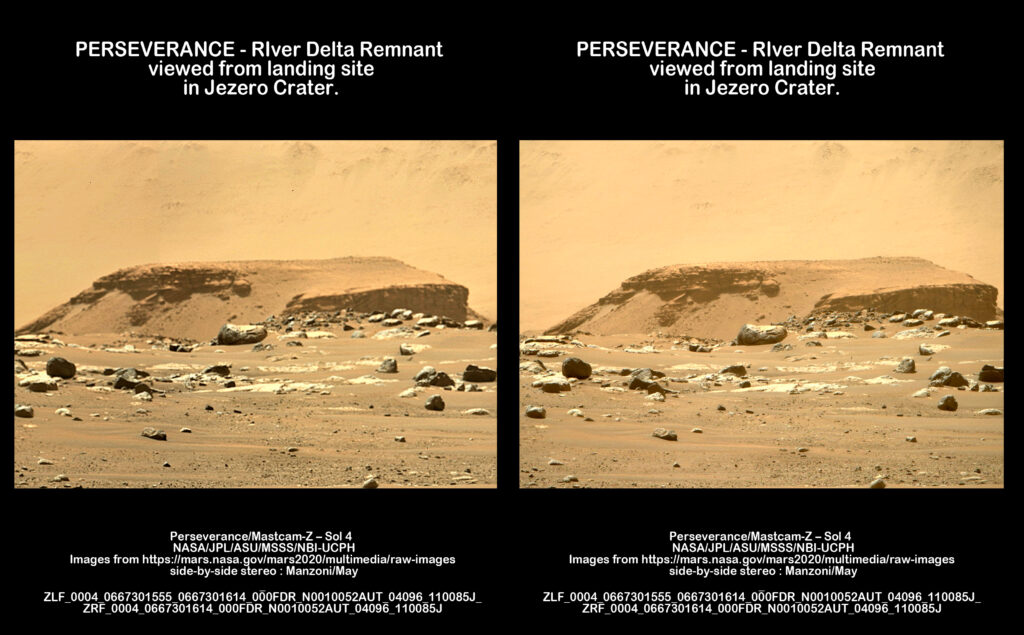
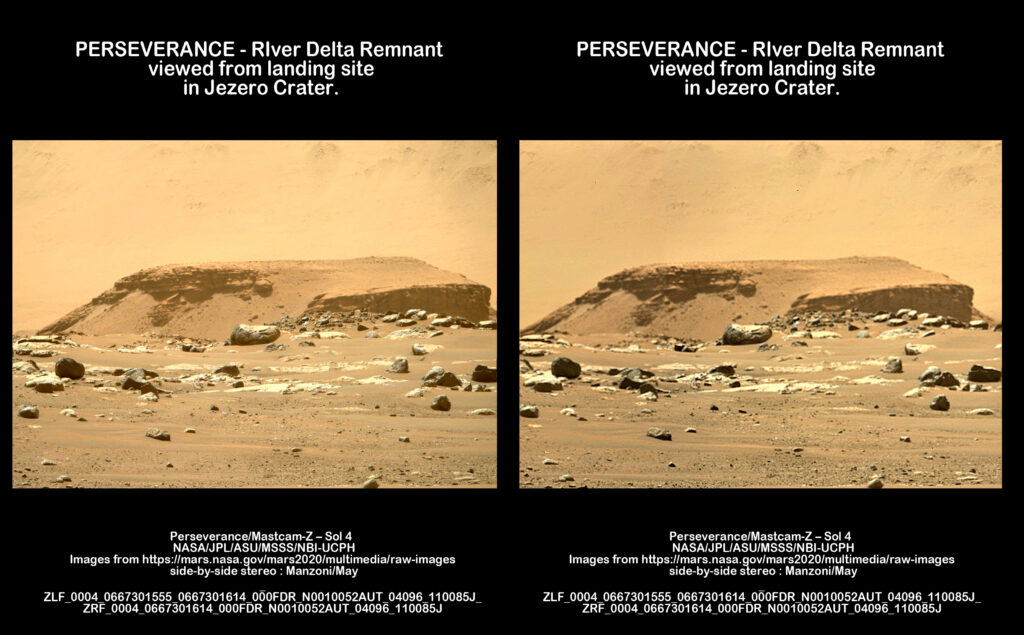
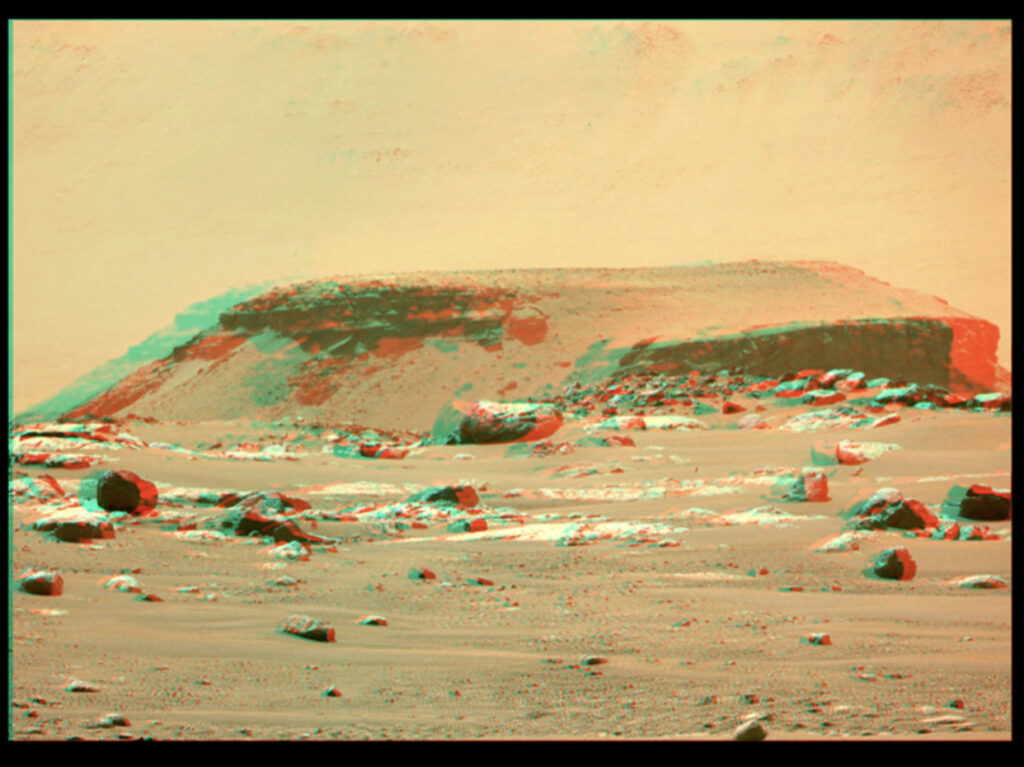
Delta Remnant, View 2: The faint cloud-like appearances in the ‘sky’ above the mound in the first Delta Remnant view above are in fact the massive crater wall looming behind this feature. The alternative view below from Sol 3 shows this more clearly.
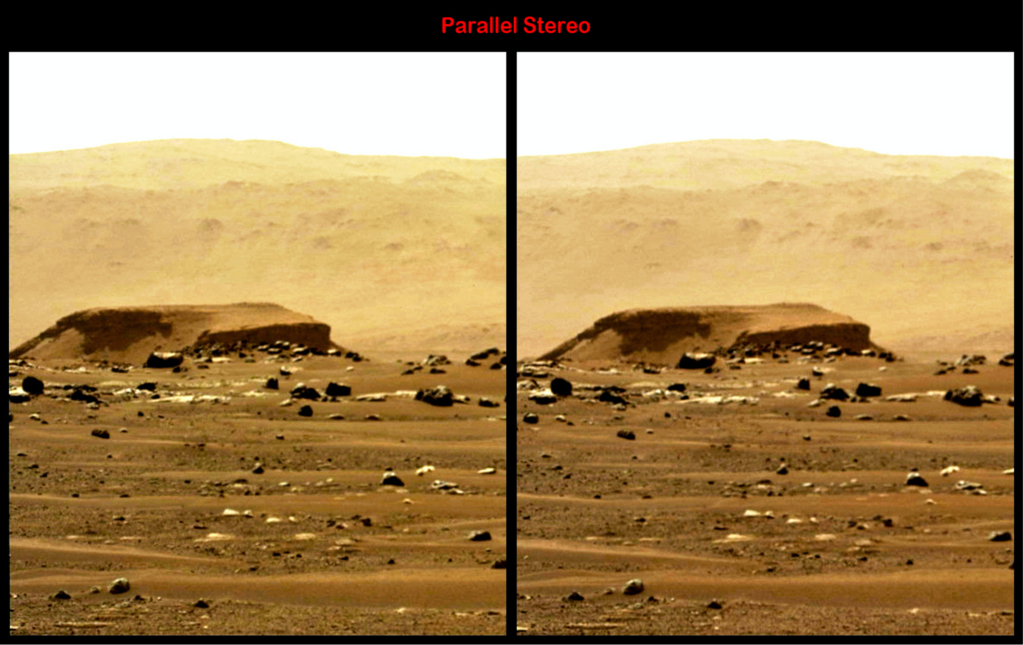
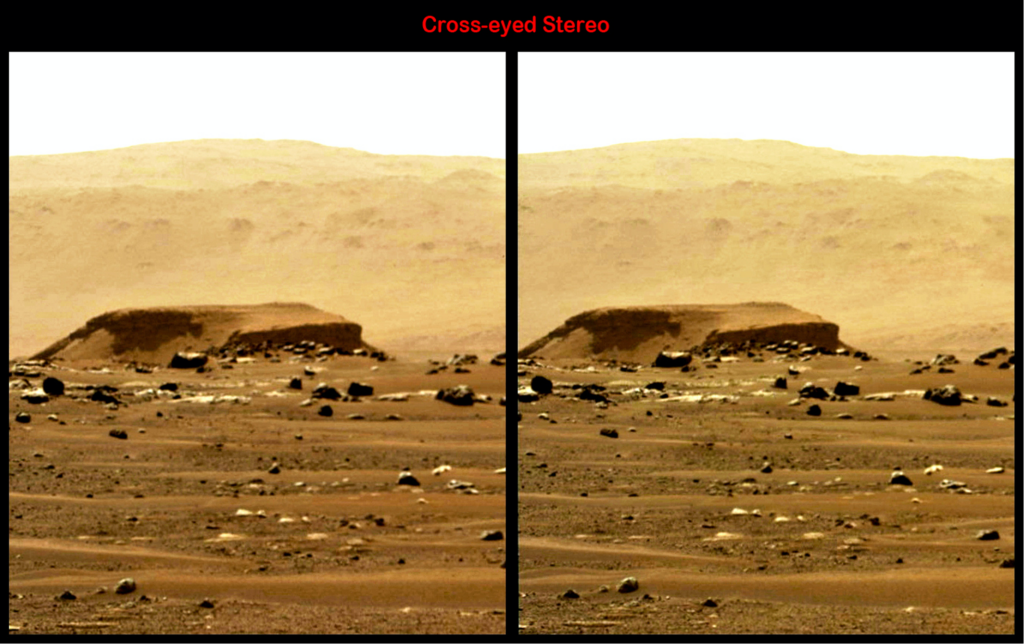

Delta Remnant, View 3: This final view below, culled from a panorama by an external processor, Javier Baranano, was actually the first time we located this feature, and for a moment we thought we had found a log cabin! But no dust clouds! It’s a tribute to the fine optics of Mastcam-Z that they were able to image this detail, so distant and small in the sol 3 panorama, with such clarity and in such informative 3-D.
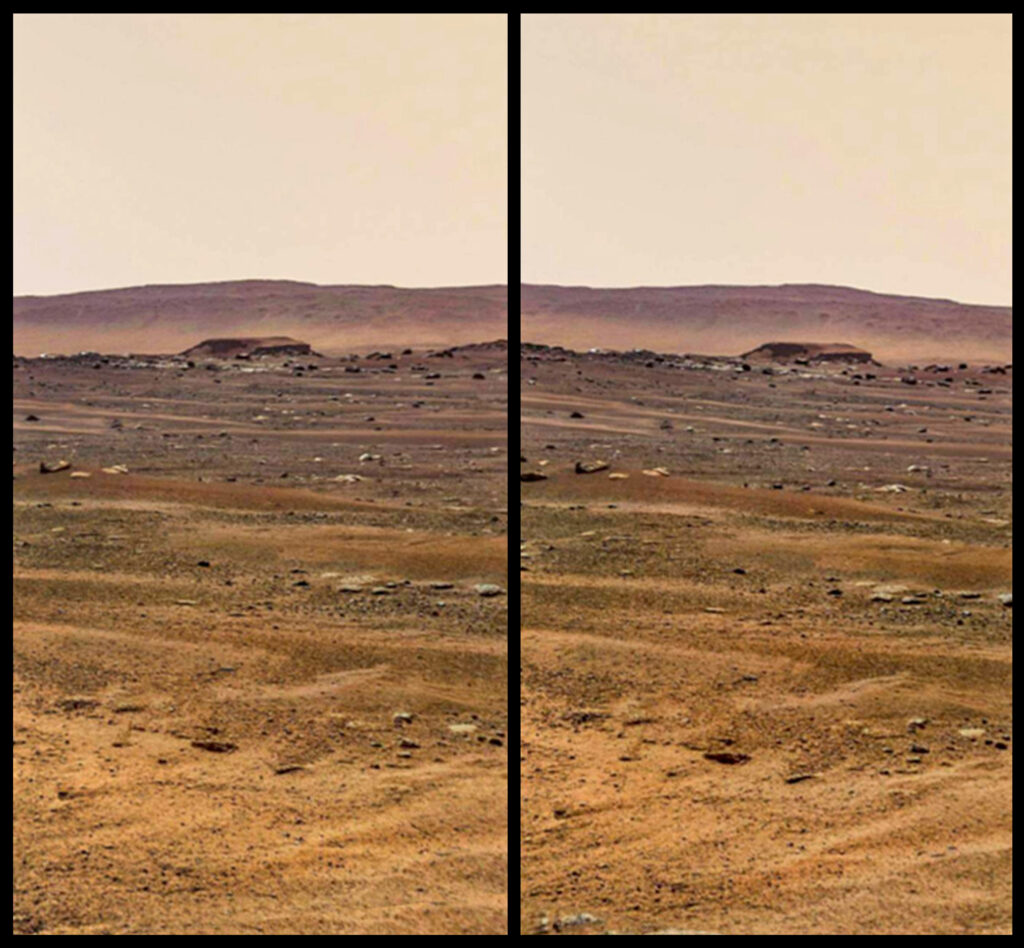
Enjoy! More to come!
–Claudia Manzoni and Brian May